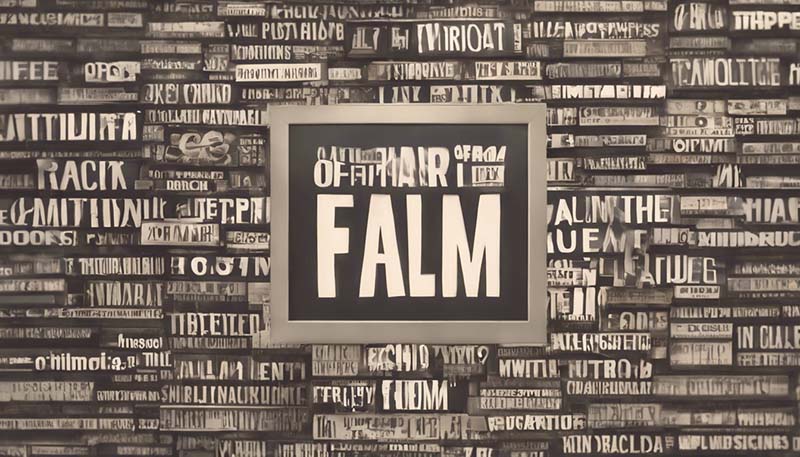The Art of Film Title Design: A Look at How Typography Enhances the Cinematic Ex
The Art of Film Title Design: A Look at How Typography Enhances the Cinematic Experience
Film title design is an essential aspect of filmmaking that often goes unnoticed by the general audience. It is the first glimpse into the world of the film and can set the tone for the entire cinematic experience. Typography plays a crucial role in this art form, as it not only provides essential information about the film but also evokes emotions and conveys the film's genre, style, and narrative. In this article, we will explore the various ways typography enhances the cinematic experience and how it has evolved over time.
The Role of Typography in Film Title Design
Typography in film title design serves several purposes:
- Identification: It helps the audience identify the film and its key creative personnel, such as the director and lead actors.
- Emotion: It can evoke specific emotions that align with the film's themes and atmosphere.
- Genre: It can signal the genre of the film, whether it's a romantic comedy, a thriller, or a science fiction epic.
- Narrative: It can provide subtle clues about the narrative or the characters within the film.
Setting the Tone with Typography
Typography can greatly influence the viewer's initial impression of a film. For example, the bold and angular typeface used in the title design for "The Godfather" (1972) conveys a sense of power and danger, reflecting the film's themes of crime and family legacy. In contrast, the elegant and flowing typeface used for "Gone with the Wind" (1939) evokes a sense of grace and romance, fitting for a sweeping historical epic.
Advertisement
The Evolution of Film Title Design
Film title design has evolved significantly over the years, reflecting changes in technology, design trends, and cultural preferences. Early film titles were simple and functional, often using plain text on a black background. With the advent of sound and color, title design became more creative and visually engaging.
Pre-Digital Era
In the pre-digital era, film title design was primarily achieved through manual techniques such as hand-lettering, painting, and the use of physical typefaces. Some of the most iconic title sequences, such as the opening credits of "2001: A Space Odyssey" (1968), were created using a combination of these techniques.
Digital Era
With the advent of digital technology, film title design has become more dynamic and versatile. Designers can now use computer software to create complex animations, 3D effects, and other visual elements that were not possible in the pre-digital era. The title sequence for "Se7en" (1995), with its grim and gritty aesthetic, is a prime example of how digital technology has expanded the possibilities of film title design.
Case Studies: Iconic Film Title Designs
Let's take a closer look at some iconic film title designs and how typography played a key role in enhancing the cinematic experience:
1. "The Godfather" (1972)
The title design for "The Godfather" uses a bold, serif typeface that evokes a sense of power and authority, reflecting the film's themes of crime and family legacy. The typeface is set against a black background, with the title and credits appearing in a staggered, uneven arrangement that adds to the sense of tension and unease.
2. "Gone with the Wind" (1939)
The title design for "Gone with the Wind" features an elegant, flowing typeface that complements the film's romantic and historical themes. The title and credits are set against a backdrop of swirling, abstract shapes that evoke the film's tumultuous setting and the passage of time.
3. "Se7en" (1995)
The title sequence for "Se7en" is a masterclass in using typography to convey the film's dark and gritty atmosphere. The title and credits are set against a backdrop of newspaper clippings, photographs, and other visual elements that create a sense of chaos and disorder. The typeface itself is gritty and distressed, further enhancing the film's grim aesthetic.
Conclusion
Typography plays a vital role in film title design, enhancing the cinematic experience by setting the tone, evoking emotions, and conveying the film's genre and narrative. As technology and design trends continue to evolve, we can expect to see even more innovative and creative uses of typography in the world of film title design.
